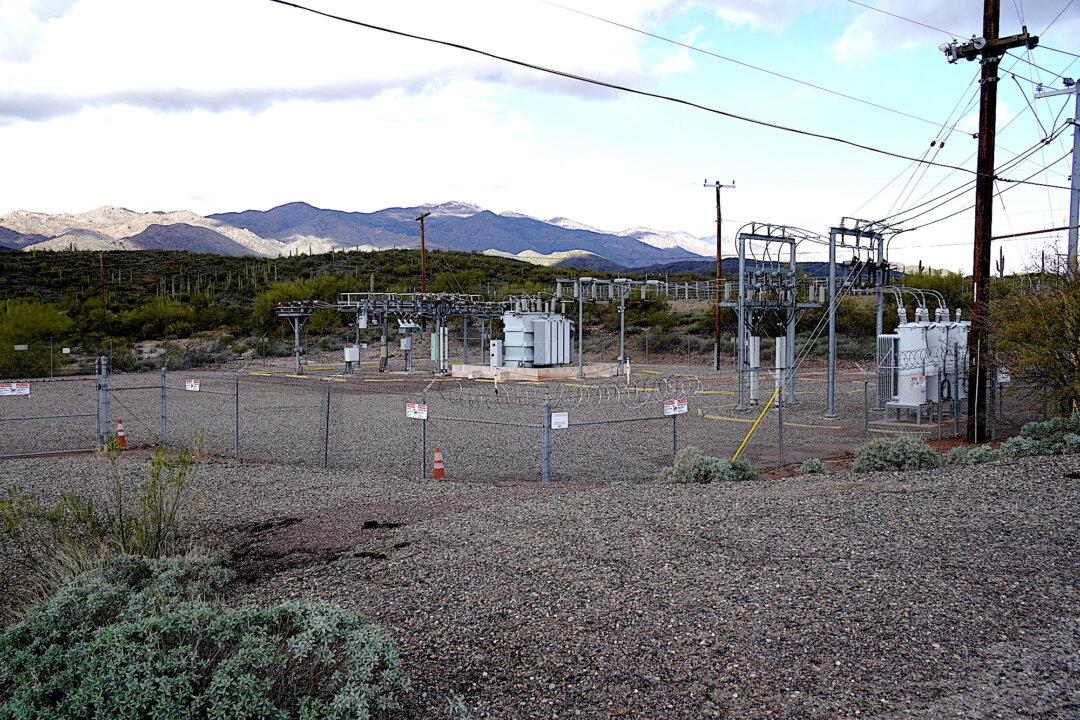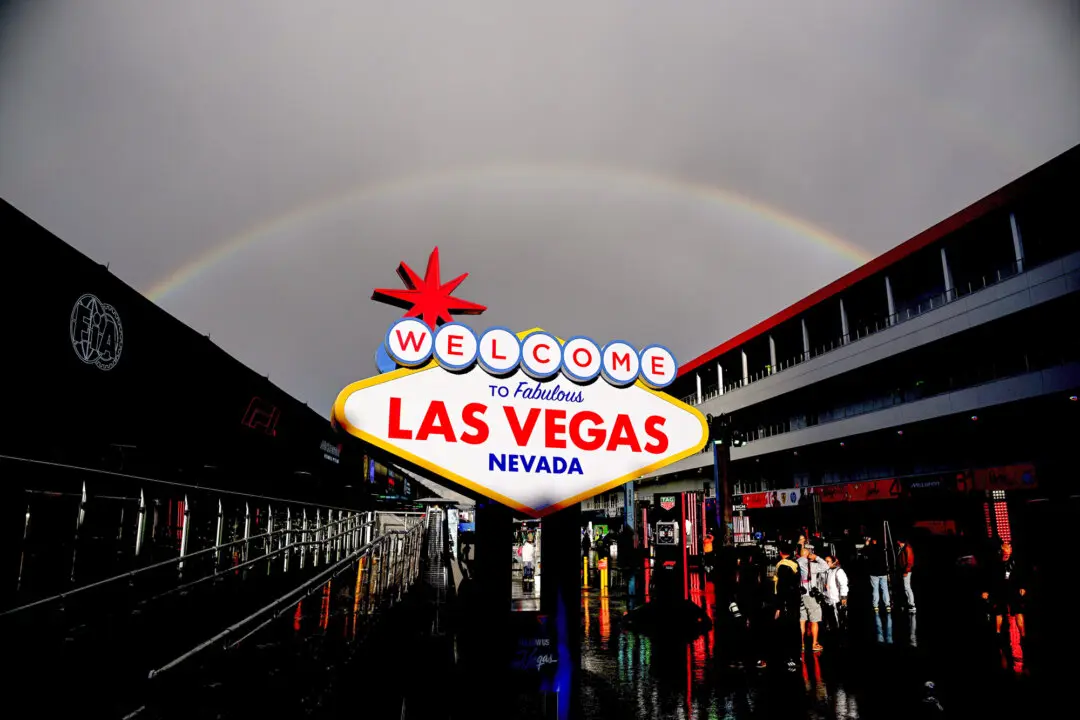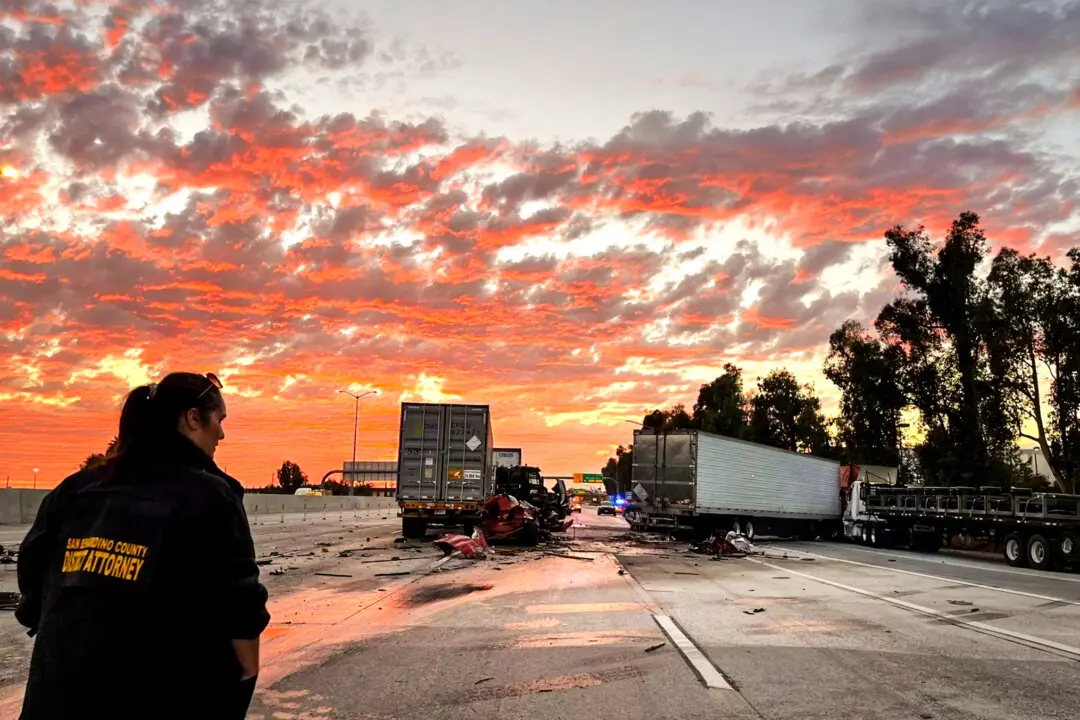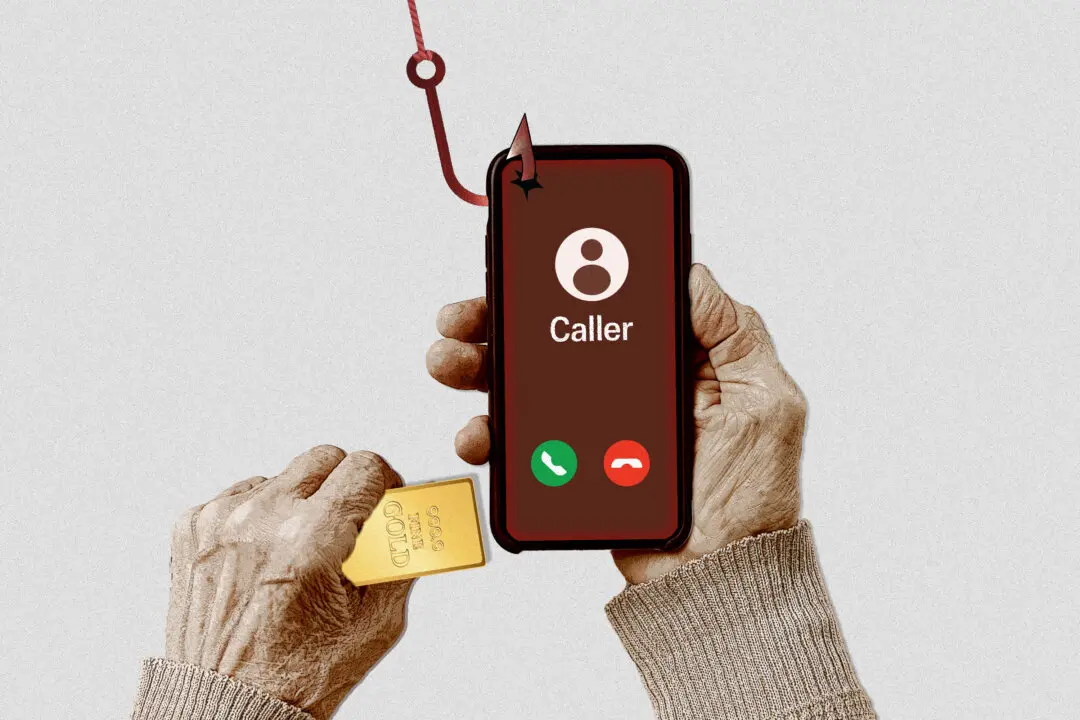
An unmanned power substation in Arizona is protected by a chain link fence and barbed wire on Jan. 18, 2023. Allan Stein/The Epoch Times
BOULDER CITY, Nevada—During World War II, America feared surprise enemy attacks on its electrical power grid plunging the nation into darkness.
The military considered Nevada’s Hoover Dam potentially vulnerable as a supplier of hydroelectric energy for the defense industry.





